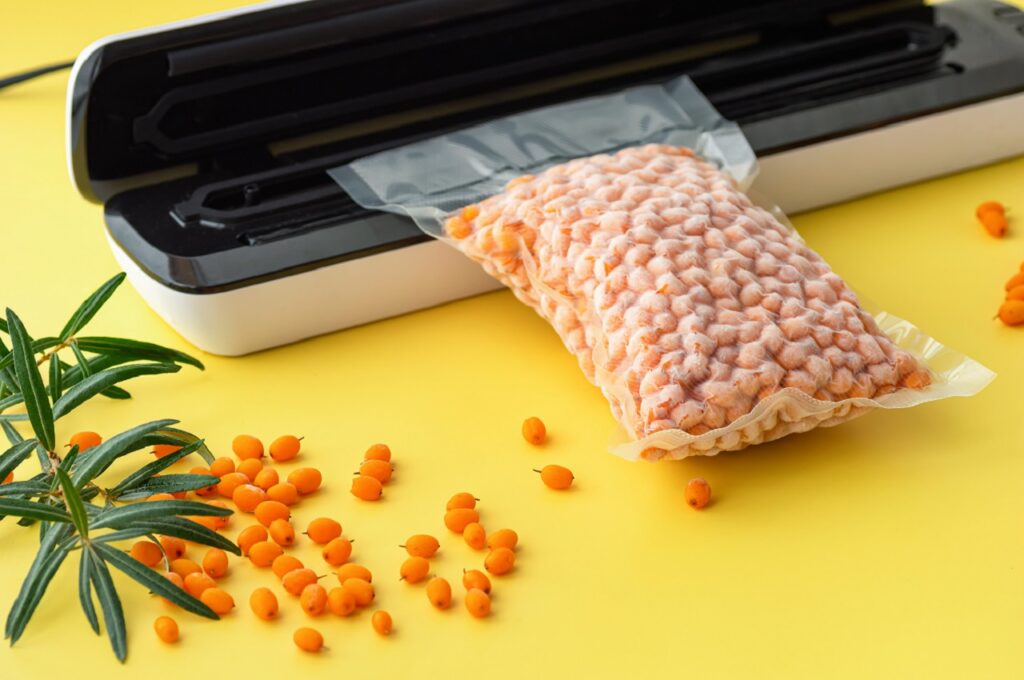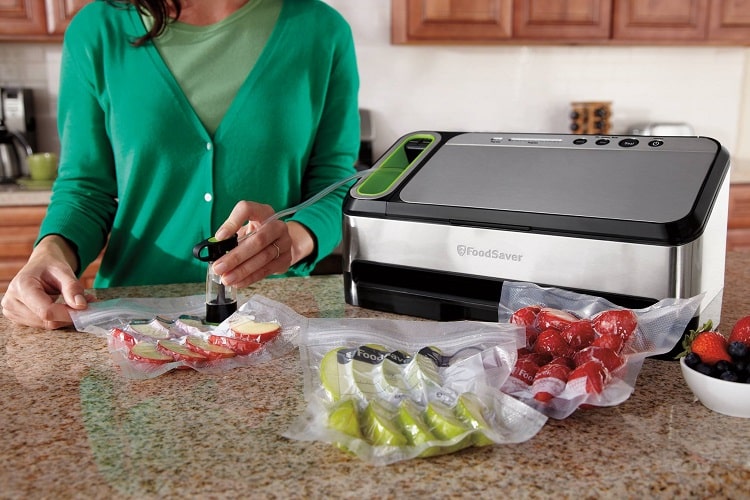Don’t let those apples rot and those carrots go mushy. Keep your fruit and veg crisp and fresh – and packed with vitamins and other nutrients for a much longer time – by sealing them in vacuum packed bags.
Though you can also use regular plastic bags to seal your fruit and veg, extending their shelf life via special vacuum packed bags will always do the trick.
Below are some top tips on how to use vacuum packing technology to the best advantage, and some advice regarding why this technology is so advantageous.
Vacuum packing your veg will keep your refrigerator stocked with tasty, healthy treats for much longer and it is cost effective too as it will spare you the hassle and the annoyance of having to throw away fruits and vegetables that have exceeded their sell by date and started to go off.
This method can be used for all kinds of fruits, vegetables, and other organic matter, from carrots to pears, and from basil leaves to strawberries.
How to keep fruits, vegetables, herbs and more nice and fresh?

- Skin the fruit or vegetable and (if necessary) chop it down into smaller servings. Something large such as a butternut squash is best chopped up, whilst a smaller fruit such as an apple can be simply peeled and left whole.
- Wash the fruit or veg in ice cold drinking water (not tap water, which can harbor bacteria).
- This step is for vegetables only. Vegetables should be blanched quickly in boiling water for 1-4 minutes (this short time period is important because it keeps the veg crisp and stops it going soggy). This will destroy any lingering germs and prevent the vegetable from ripening.
- Use clean blotting paper or kitchen towel to remove excess water from the fruits and vegetables.
- Vacuum pack the fruits and veg and then store them in the cupboard or the refrigerator. To keep vacuum packed fruits and vegetables for even longer time periods, it is a good idea to store them in the freezer. Just think about it: supermarkets use cool and very cold temperatures to keep these organic products fresh, so you should ideally follow suit.
- NB: you do not need to pack each fruit and vegetable individually. It is easier and quicker to lay all of your prepared fruits and vegs onto a cookie baking tray and then vacuum seal the entire tray. Of course, with this method, you need to unseal and then use the fruits and vegetables all at once.
Think how much money you have saved! No need for expensive laboratory technology to cool and seal your fruits and veg. You can do this all in the comfort of your own home.
Nevertheless, there are a few issues and problems associated with vacuum packing fruits, vegetables and other organic materials such as herbs. These will be discussed below.
Problems associated with vacuum packing fruit and vegetables
It is a good idea to try and eat vacuum packed fruits and vegetables within 8-12 days. This is because they can still start to discharge gases that can break the seal of a vacuum packed bag and cause the fruit or vegetable to spoil.
In addition, any germs that do remain within the vacuum packed bag will begin to respire anaerobically (reducing further gas and causing decomposition) and also to multiply – though at a slower rate than if you had not taken the fruit or vegetable through the vacuum packing process.
Read also: Vacuum Sealer Troubleshooting
Is vacuum sealing worth it? Yes, almost certainly!

Good quality fruits and vegetables, when vacuum sealed, will preserve their taste and nutritional value for around a fortnight longer than they would if you just left them in the fruit bowl or the refrigerator.
In fact, once you manage to perfect the vacuum sealing process, you will find that when you defrost and unseal your fruits and veg, they will be as fresh and tasty as they were when they were first plucked.
It is very easy to reheat your fruit and veg again. This can be done using a specialized machine, with some warm water (just pour the water over them), or just by placing them in the microwave. Once you have done so, get ready to enjoy that crisp, vitamin rich, just picked flavor!
